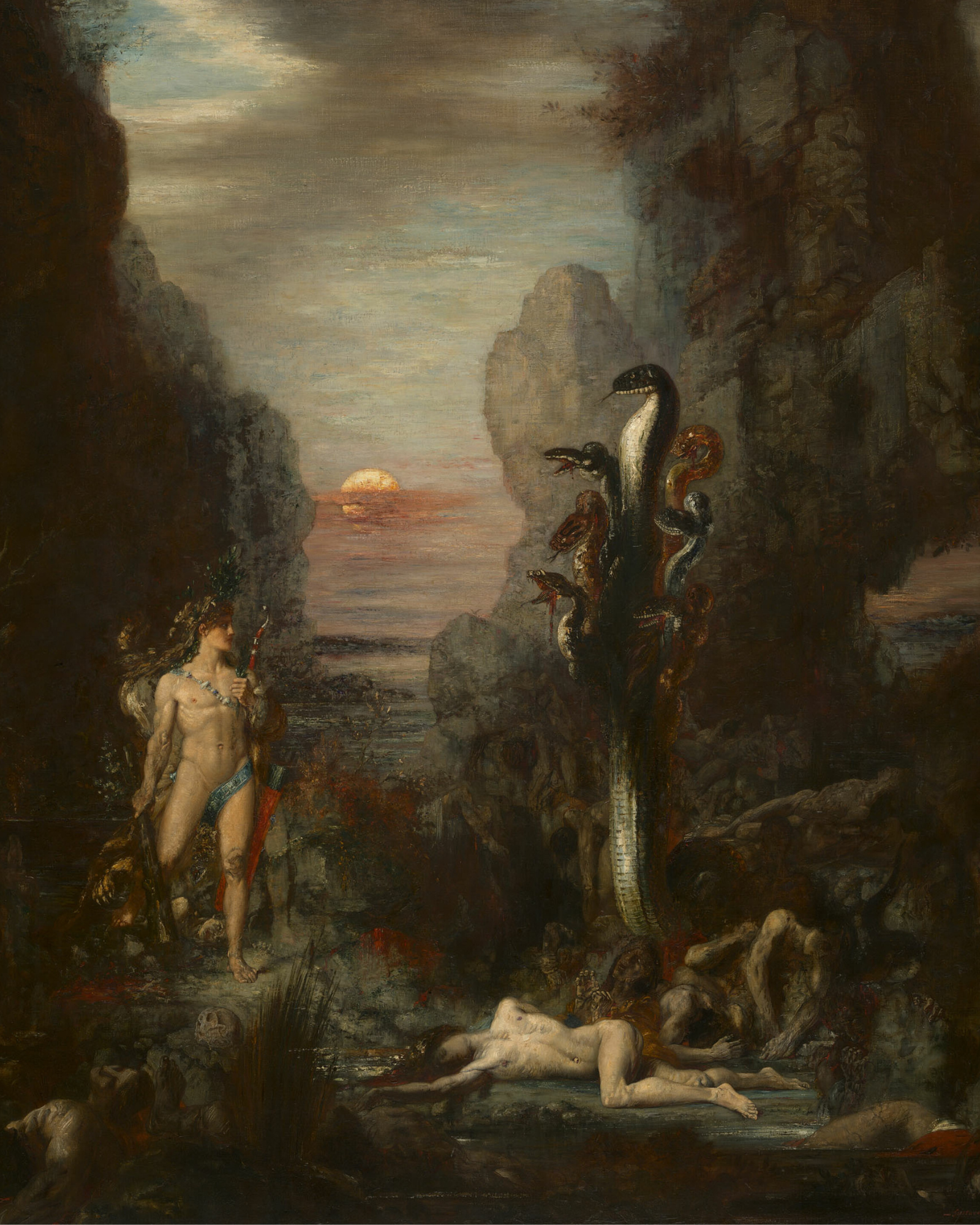Gustave Moreau: The Master of Dreamlike Paintings

Gustave Moreau was a French artist known for his fantastical and symbolic paintings that combined dreamlike imagery with deep meanings. Born in 1826 in Paris, Moreau became a leading figure in the Symbolist movement, a style of art that focused on expressing emotions, dreams, and the mysteries of life rather than depicting the physical world in a realistic way. His works often featured mythological subjects, biblical stories, and exotic settings, transforming them into vibrant, almost otherworldly scenes.
An Artistic Path with Symbolism
Moreau's journey as an artist began at a young age. He studied at the École des Beaux-Arts in Paris and quickly gained recognition for his talent. Though his early works were more traditional, his interest in mythology, religion, and the mysterious aspects of human existence led him to develop a unique style that set him apart from his contemporaries.
He was particularly influenced by Romanticism and the desire to explore the deeper layers of human emotion. Unlike the more realistic art of his time, Moreau’s paintings were full of symbols and vibrant colors, often depicting figures and scenes from mythology, legends, and ancient history. These works were not just about the subject matter; they were about exploring the emotions and mysteries hidden within those stories.
Mythology and the Supernatural
Many of Moreau's paintings featured themes of myth, dreams, and the supernatural. He was fascinated by ancient myths, especially those from Greek and Roman stories, and often depicted scenes with gods, heroes, and mythical creatures. One of his most famous works is Jupiter and Semele, which shows the moment when the god Jupiter reveals himself to the mortal Semele, surrounded by glowing, dreamlike colors. The image is both dramatic and mysterious, filled with symbolism about power, desire, and the divine.
Another of his notable works, The Apparition, features the biblical story of Salome, who is depicted holding the severed head of John the Baptist. The painting shows Salome standing in a trance, with the head appearing almost ghostly in front of her. The work is filled with vibrant colors and dramatic contrasts, making it feel like a scene pulled from a dream or a nightmare.
A Style Full of Color and Detail
Moreau’s paintings are known for their intricate details and rich colors. He often used golds, deep blues, and vivid reds to create a sense of mystery and wonder. His brushwork was meticulous, and he paid close attention to every detail, from the texture of fabrics to the gleaming surface of jewels or the delicate movement of a figure. His paintings seem to shimmer with life, drawing the viewer into a dreamlike world where everything is both beautiful and mysterious.
What set Moreau apart was his ability to combine mythological and religious themes with an almost surreal quality. His works didn’t just depict the past; they made the past feel alive, charged with emotion, and full of hidden meanings. Each painting was like a window into a different world, one where the boundaries between reality and imagination blurred.
An Influence on Symbolism and Surrealism
While Moreau was never fully accepted by the mainstream art world during his lifetime, his work became highly influential later on. He was an important figure in the Symbolist movement, which sought to express the inner workings of the mind and explore themes of spirituality, dreams, and emotions. Moreau's work had a lasting impact on artists such as Odilon Redon, Henri Rousseau, and even the Surrealists like Salvador Dalí, who were inspired by the strange and dreamlike quality of his paintings.
Moreau’s ability to explore the symbolic meanings behind his subjects helped pave the way for later movements that sought to express more than just the physical world. The Surrealists, who came after him, admired his use of dreamlike imagery and his ability to tap into the subconscious mind.
A Legacy of Mystical Art
Gustave Moreau passed away in 1898, but his influence continues to be felt in the world of art today. His paintings are considered masterpieces of the Symbolist movement and are celebrated for their beauty, complexity, and the rich emotions they convey. Museums around the world, including the Musée Gustave Moreau in Paris, hold collections of his work, allowing viewers to experience the dreamlike worlds he created.
Moreau’s art invites us into a world where mythology, dreams, and emotions collide in vibrant colors and intricate details. His work shows that art can be more than just what we see; it can also be a way to explore deeper truths about life, the subconscious, and the mysteries of the world. Through his fantastical paintings, Gustave Moreau leaves behind a legacy of mystical art that continues to inspire and captivate viewers today.